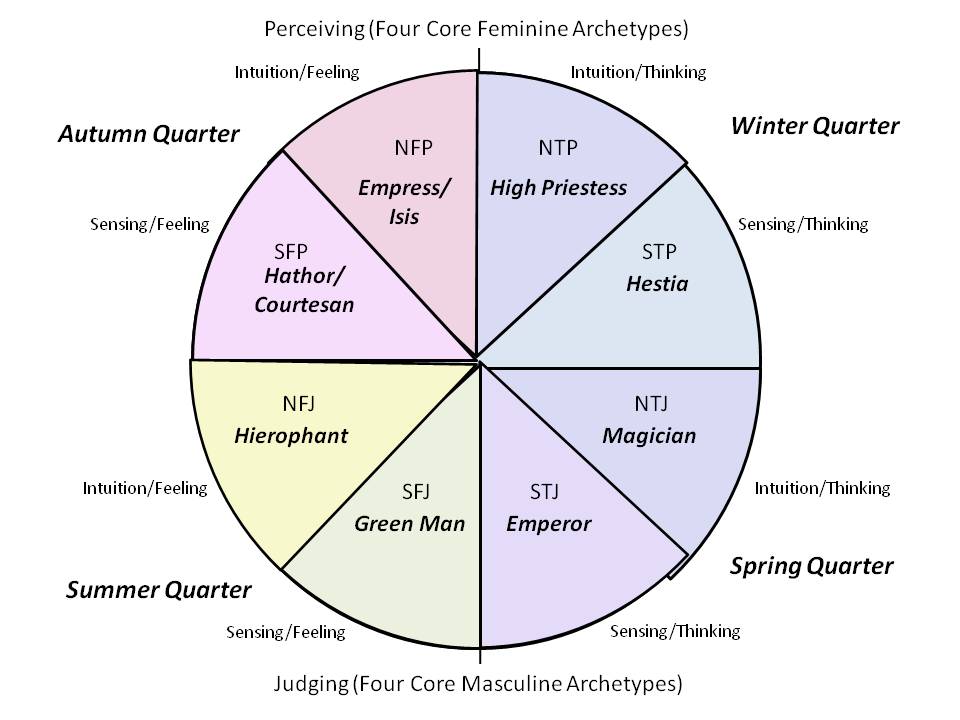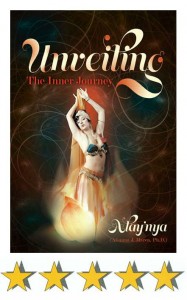Six-Year Anniversary for The Unveiling Journey Blog Series: Six Top Blog Posts Over Past Six Years
Over these six years, I’ve written about 100 blog posts.
The archetype overview blogs are by far the most popular in the nearly 100 blogposts, written over six years, for The Unveiling Journey – a companion blog to the book, Unveiling: The Inner Journey, published in July, 2011.
The most popular concept that people are tracking is that of our core power archetypes.
Crucial Themes for Previous The Unveiling Journey Blog Posts
Many of the Unveiling Journey blogs over the past two years (since Unveiling was published) have focused on refining and giving more context for the six core power archetypes, together with identifying and building out the two “support role” archetypes – the two rest-and-recharge ones.
Not surprisingly, the most popular blogs have been those that overviewed the eight core archetypes – either as all eight, or focusing on the six core power ones. The masculine/feminine archetypal distinctions have also been popular.
For all of these crucial blog posts, the essential diagram is the Core Archetype Octant Chart given below. It shows each of the core archetypes (six core power ones, and two rest-and-recharge ones), mapped to the Jungian Psychological Type matrix. (This subsumes the Introversion/Extroversion distinction, and focuses on the three other modalities: Sensing/INtuition, Thinking/Feeling, and Judging/Perceiving.)

Core archetypes octant chart – each archetype (each octant) corresponds to one of Jung’s Psychological Types (discounting the introversion/extroversion distinction). Copyright Alianna J. Maren, Ph.D., 2013. All rights reserved.
The Six Most Popular Blogs – During Six Years of The Unveiling Journey
Here, in increasing order of popularity, are the six most popular blog posts since this blog site was established:
- #6: Becoming a Master of the Universe: Three Essential Life-Stages – three stages, and seven steps each, describe our adult life journey – real mastery work; and the first of these (the Worldly Sequence) encompasses our six core power archetypes, followed by integration,
- #5: Moore and Gillette, “King, Warrior, Magician, Lover” – 2 1/3 Out of Four Ain’t Bad! – Robert Moore and Douglas Gillette advance the notion of four core archetypes describing the male psyche. (Similar approach to how Antonia Wolff advanced the notion of four core feminine archetypes in her highly-regarded Structural Forms of the Feminine Psyche.) Find out why Moore and Gillette rank 2 and 1/3 as a “correct score” out of four possible points (whereas Antonia Wolff’s insights get 3 1/3 out of 4),
- #4: Masculine vs. Feminine – Core Archetypes – particularly useful if you’re trying to understand a “masculine” archetype within a simplified “feminine” archetypal group (what does your Amazon really mean?), and vice versa, ,
- #3: The “Unveiling Archetypes” and the Jungian Dimensions – details the relationship between the eight core archetypes and the Jungian Psychological Types,
- #2: Mapping the Eight Core Power Archetypes to the Jungian System – introduces the notion that there can be a relationship between the eight core archetypes and the Jungian Psychological Types (this is an intro blog; you can skip it and go directly to #3, which is meatier),
- #1 (The All-Time Winner for Blog Popularity): Your Six “Power Archetypes” – What Happens When One Doesn’t Function? – introduces the notion that we need to cultivate all of our core power archetypes – not just sit in our primary one. The idea that we would be “typecast” was an indirect result of the Myers-Briggs Type Inventory, which was invented to match incoming servicemen (and women) to military specialties during WWII. Carl Jung, in his theories for the Psychological Types, advocated that we develop all of our Type-roles over time. This realization is coming back more into mainstream recognition.
If You Had to Pick Just One
The most useful blog out of these six is not the one that’s been the most popular. Instead, it’s the most recent one: Masculine vs. Feminine – Core Archetypes. Three reasons that I suggest this as your starting place:
- Most useful and relevant content – in the eighteen months between posting the first blogs on core archetypes and their integration (these would be the three most popular blogs), I’ve had plenty of time to refine, distill, and make more concrete the essential ideas,
- Clearest overview of the eight core archetypes – including their match-ups to the Jungian Psychological Type dimensions, and
- Best encapsulation of the “feminine archetype” and “masculine archetype” bundles – gives a concise summary of how women use their Amazon archetype as a short-hand notation (or “bundling”) for their four masculine archetypes, and how men use their Lover archetype as a “bundling” for their feminine ones – the pros and cons of this “bundling” for each gender.
Over the past two years, I’ve been “filling in the blanks” for each of the core archetypes. (A detailed Guide will appear in a forthcoming blog.)
In the next few weeks, I’ll divulge the Editorial Calendar for the coming year – important topics, major themes, and essential insights (useful for helping you navigate your own Journeys). In addition, starting in 2014, we’ll introduce several Guest Bloggers – people who have important messages to share about their own Journeys – Heroic, Integration, or Great.

Alay’nya – author of Unveiling: The Inner Journey
Very best wishes as discover and empower each of your core archetypes during your own inner journey!
Alay’nya
(Alianna J. Maren, Ph.D.)
Author of Unveiling: The Inner Journey
You are the Jewel in the Heart of the Lotus. Become the Jewel!
The Unveiling Journey blog details the theory – archetypes, life journeys, integration.
To experience your own Journey in a structured, safe, and gentle (yet effective) setting, visit Alay’nya’s website, and consider either a workshop with Alay’nya or one-on-one coaching.
Resources
- To learn about upcoming workshops with Alay’nya, go to Alay’nya’s website.
- To study Oriental dance with Alay’nya, go to Alay’nya Studio – Instruction, and visit the Curriculum page (forthcoming) for class content and resources .
- To order an autographed and gift-wrapped copy of Unveiling, go to the Unveiling order page.
Connect with Alay’nya and the Unveiling Community
- Check out Alay’nya’s YouTube Channel
- Connect with Alay’nya on Facebook
- Follow Unveiling: The Inner Journey on Facebook
This blog series develops themes originally published in Unveiling: The Inner Journey, published by Mourning Dove Press.
Unveiling currently has twenty 5-star Amazon reviews, and has been recommended by luminaries:
- Dr. Christiane Northrup – “This book is delightful”
- Midwest Book Review, in Bethany’s Books – reviews by Susan Bethany – “highly recommended”
- Nizana al Rassan, writing for (the now out of circulation) iShimmy.com – “a fascinating read with so much wisdom and solid advice.”
Julie Marie Rahm, aka America’s Mindset Mechanic on Unveiling: The Inner Journey
What does Julie Rahm, America’s Mindset Mechanic and author of Handle Everything: Eight Tools You Need to Live Well and Prosper have to say about Unveiling: The Inner Journey?
Julie writes:
Unveiling is the definitive guidebook for women who want to experience lives of joy and fulfillment, and who just want to exhale into each day. Alay’nya reveals powerful, personal stories of her own life journey to fascinating womanhood, sensuality, and self-acceptance in ways that struck me like a velvet hammer. Her fresh approach to living illuminated my own bind spots. It is impossible to read Unveiling without awakening to new and possibly shocking self-awareness. For women ready to make real and lasting changes toward enlightenment and bliss, Unveiling is a must-read..”
Read this and more reviews of Unveiling: The Inner Journey.
|
Paper |
Kindle |
|||
Julie Marie Rahm, America’s Mindset Mechanic
Check out Julie Marie Rahm!
Julie Marie Rahm, America’s Mindset Mechanic and author of Handle Everything: Eight Tools You Need to Live Well and Prosper and also Military Kids Speak (great for parents, teachers, and coaches of military kids) uses a great technique that can help you clear energy blockages, ranging from those from this life through the influence of your ancestral karma. Connect with Julie at info (at) americasmindsetmechanic (dot) com to learn more about how she can help you.
Books by Julie Marie Rahm, America’s Mindset Mechanic
Kindle
Kindle
|
Kindle
|
Kindle
|
|||
Copyright (c) 2013, Alay’nya (Alianna J. Maren, Ph.D.). All rights reserved.
Related Posts: Archetypal Roles and Everyday Life
- Hathor or Hierophant – Who’s on Top? – More than just discussing two specific core power archetypes (pleasure-goddess Hathor and guru/guide Hierophant), this addresses our internal dynamics as our masculine and feminine archetypes each vie for power.
- Unveiling “Archetypes” and Franklin-Covey “Roles” – A Useful Synergy and Connection – Practical musings – the Franklin-Covey Day-Planner system has us identifying various “roles” and making sure that we give time to each – we can cultivate each of our inner archetypes by matching them with our “roles” and planning time/activities for each role.

